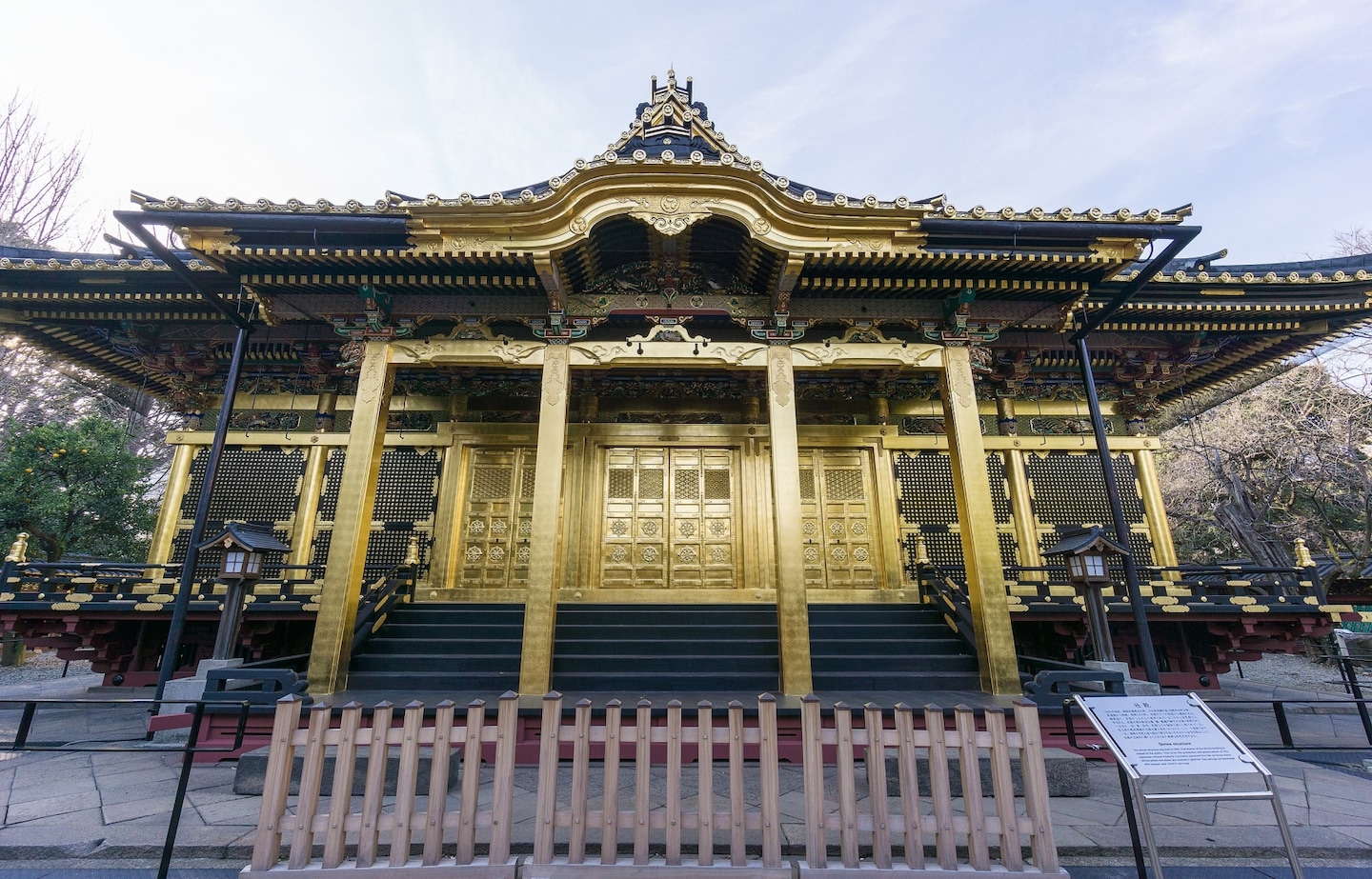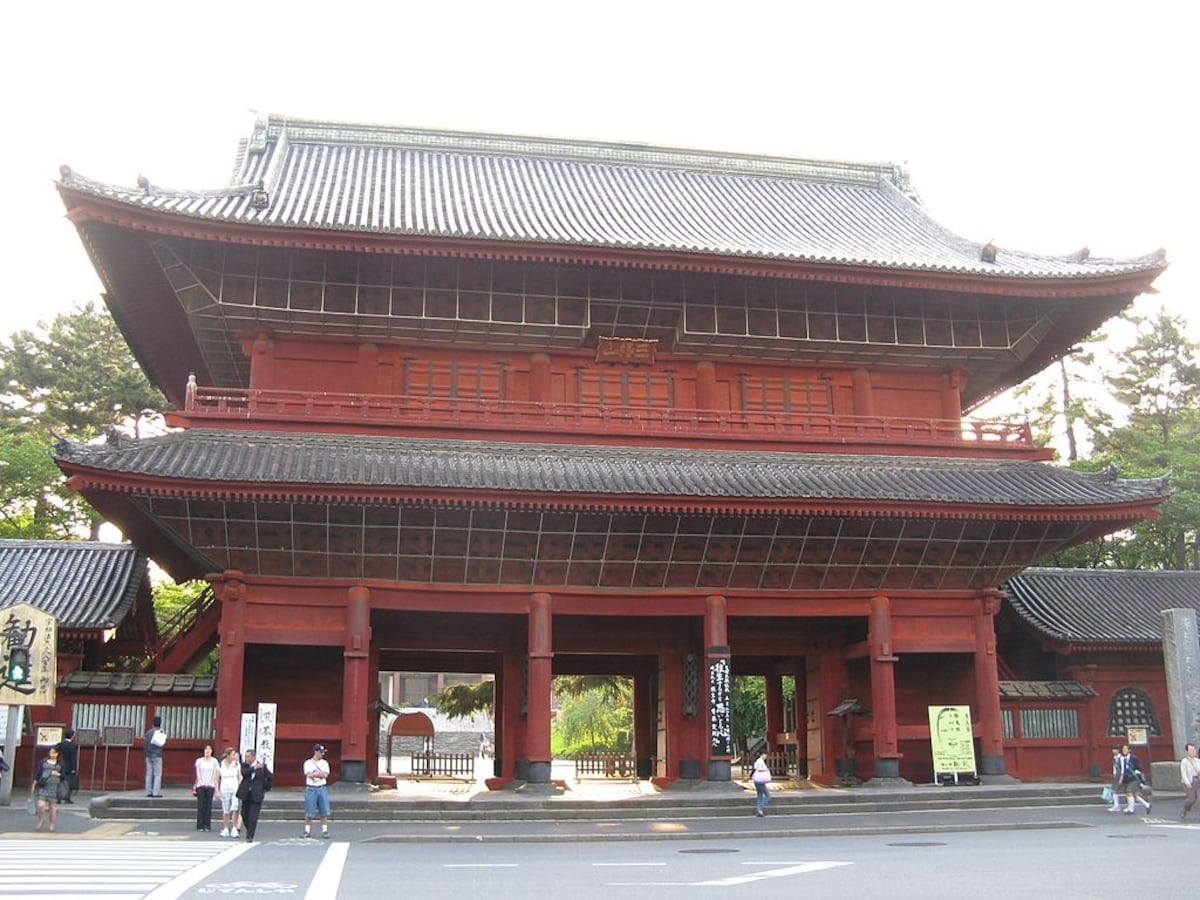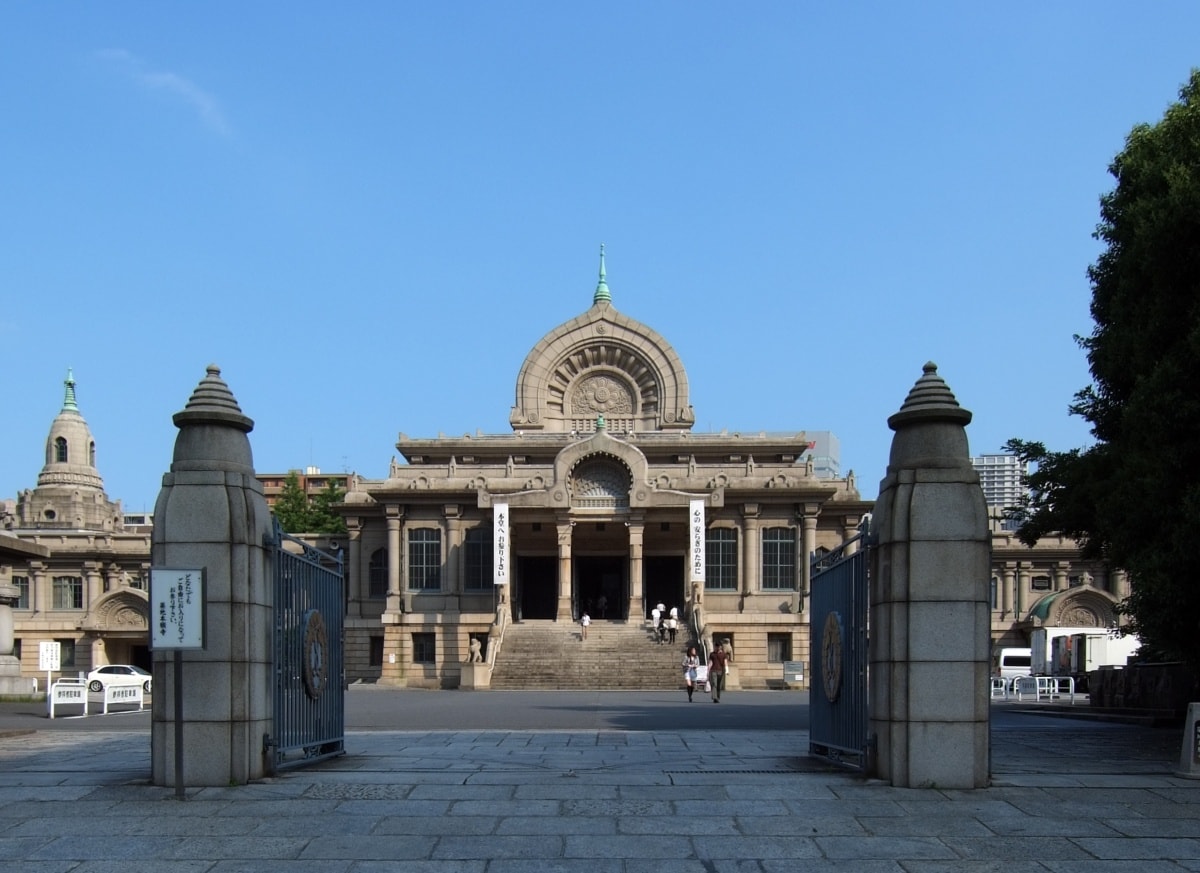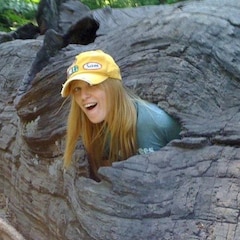7 Hidden Temples & Shrines in Tokyo
Credit: Wei-Te Wong from Taipei City, Taiwan, Republic of China - 上野東照宮, CC BY-SA 2.0
For those who are looking for something a little bit off the beaten path, or those who just want to avoid the crowds at Senso-ji Temple or Meiji-Jingu Shrine, we've complied a list of temples and shrines that are lesser known, but no less beautiful!
1. Gotoku-ji Temple
Sometimes referred to as "Cat Temple," Gotoku-ji Temple (near Gotokuji Station) is rumored to be the birthplace of maneki-neko—the beckoning cat that's displayed in the windows and entryways of so many shops. It's said that one day during the Edo Period (1603-1868), a feudal lord was beckoned by a cat, who led him to Gotoku-ji Temple. The priest of Gotoku-ji Temple offered the lord tea, but as they conversed a storm broke out. The lord waited out the storm at the temple, and when it finally lifted, he gave the priest rice crops and land to show his gratitude.
The temple and surrounding area has an incredible amount of maneki-neko! There are also plenty of goods on sale, which means you can take home a lucky little souvenir of your own.
2. Hie Shrine
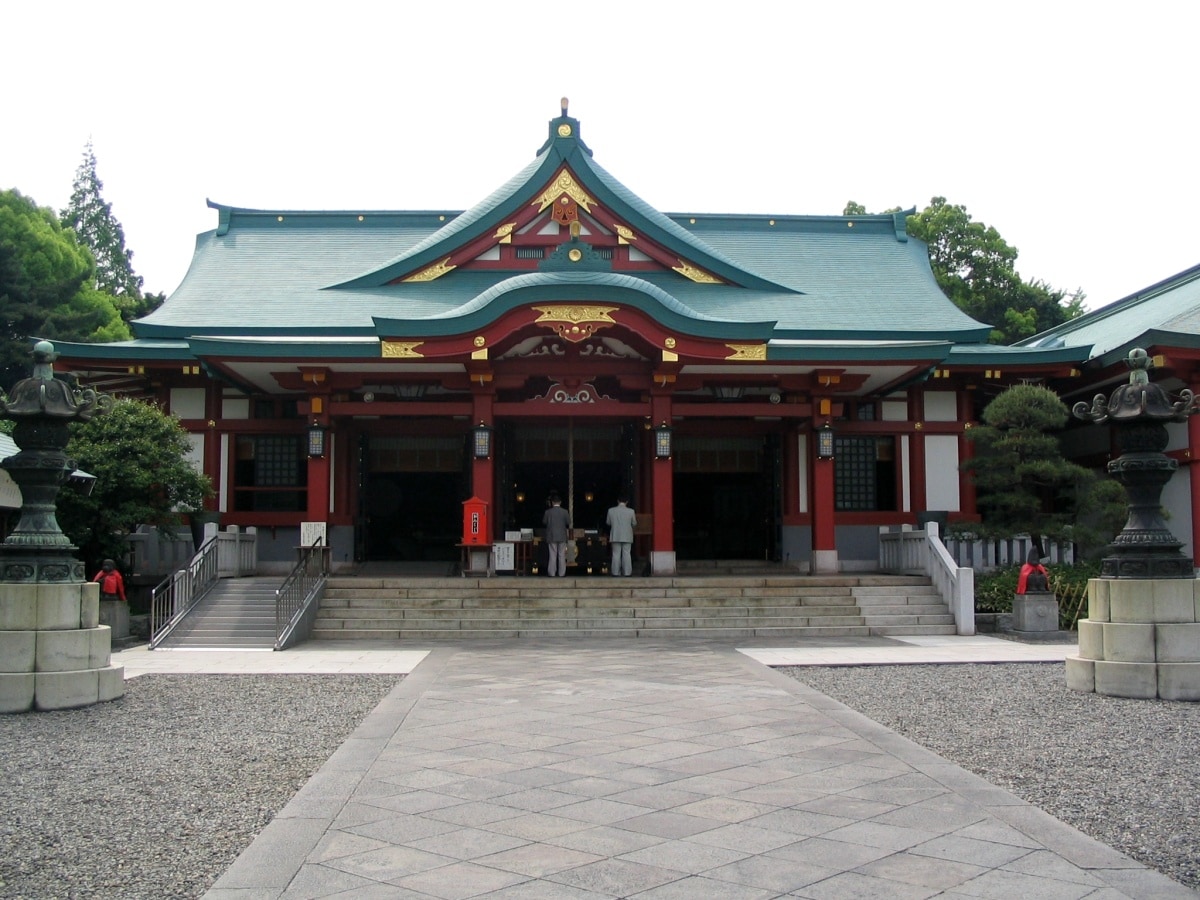
Credit: Dirk Beyer - Own work, CC BY-SA 3.0 (https://commons.wikimedia.org/w/index.php?curid=277503)
Located in the heart of Tokyo's Nagatacho neighborhood in Chiyoda-ku (near Tameike-Sanno Station), Hie Shrine was erected in 1478 on the Edo Castle grounds—which is the present location of the Imperial Palace—by architect-samurai-Buddhist monk extraordinaire, Ota Dokan. However, once Tokugawa Ieyasu's son Hidetada took over the throne, the shrine was moved from the imperial grounds to Hayabusa-cho, near the current location of the Kokuritsu Gekijo National Theater.
Since it enshrines the guardian deity of Tokyo, Hie Shrine hosts the Sanno Matsuri—one of the three major Shinto festivals in Tokyo—in mid-June of even-numbered years. Even if you visit the shrine on odd-numbered years, you can still check out the offering hall, the hall of worship, the inner sanctuary and the gate, which are all designated National Treasures.
3. Ueno Tosho-gu Shrine
Built in 1627 and dedicated to Tokugawa Ieyasu (the founder of the Tokugawa Shogunate) Ueno Tosho-gu Shrine is in Ueno Park—famous for its cherry blossoms and as the home of Ueno Zoo. A short walk from Ueno Station, the structure has remained intact despite numerous fires, battles and earthquakes, including the Battle of Ueno in 1868 and the Great Kanto Earthquake in 1923. It has been designated an Important Cultural Property of Japan, due in large part to how strongly it represents the Edo Period.
What really sets it apart from the other shrine in Ueno Park, Gojo-Tenjin, is its karamon Chinese-style gate, which was built in 1651 with gold foil and decorated with hand carved flowers and birds. The structure of the shrine itself was also built in 1651, with pillars and doors covered in gold foil and a ceiling decorated with lacquer and colorful carvings.
If you happen to visit between New Year's Day and mid-February or from mid-April to mid-May, you won't want to miss the beautiful peony garden.
4. Tomioka Hachiman-gu Shrine
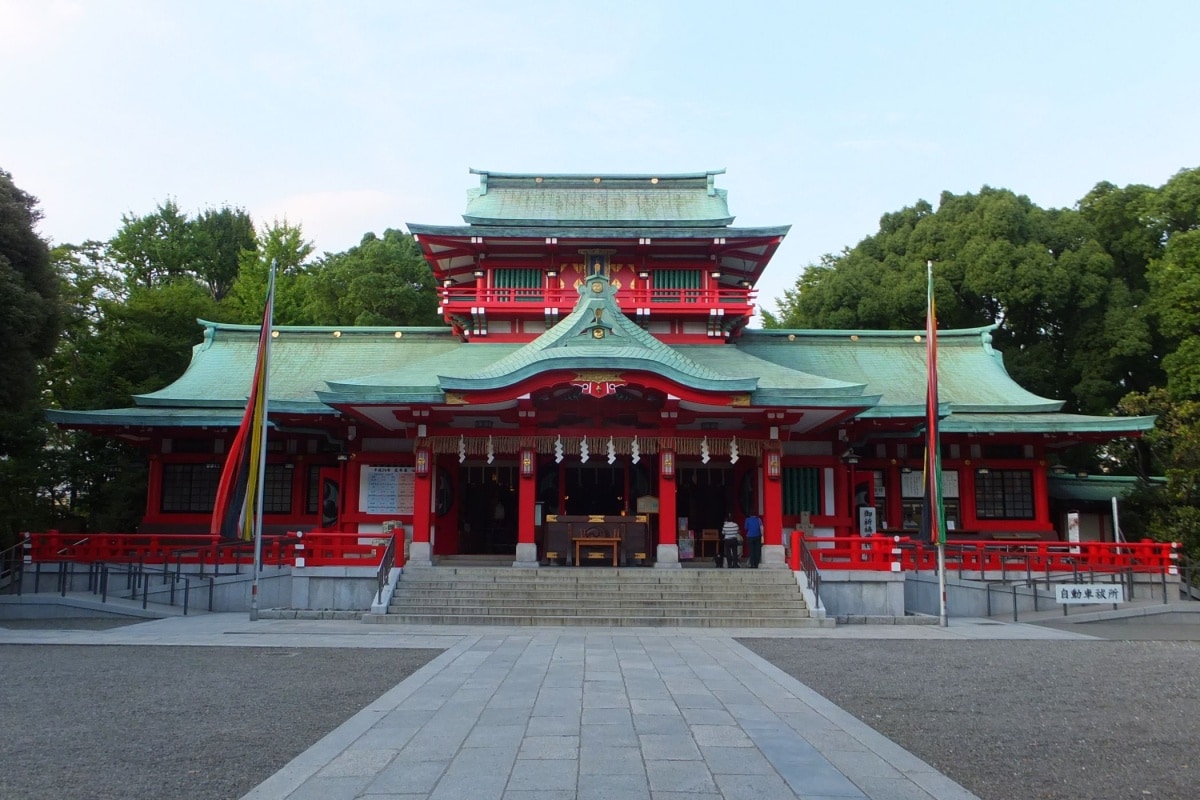
Credit: Tak1701d - Own work, CC BY-SA 3.0 (https://commons.wikimedia.org/w/index.php?curid=61990025)
Founded in 1627, Tomioka Hachiman-gu Shrine is Tokyo's largest shrine dedicated to the god of war and martial arts, Hachiman—which is fitting, since it's is where the first sumo events were held in the 17th century. Since then, the shrine has continued to have a deep connection to sumo in Japan.
Although sumo tournaments are now held at Tokyo's Ryogoku Kokugikan, there is still one ritual the shrine has continued to perform—Shinto traffic safety rituals. That's right! Here you may witness a robed priest bless cars in hopes that the owner doesn't get into any accidents.
Tomioka Hachiman-gu Shrine also hosts the Fukagawa Hachiman Festival—another of Tokyo's big three Shinto celebrations—which takes place mid-August every three years (the next one is scheduled for 2020). At this festival, 120 omikoshi portable shrines from each neighborhood are carried through the streets, and onlookers douse participants in water in a sort of purification ritual.
You can visit Tomioka Hachiman-gu Shrine in the Fukagawa district of Koto-ku near Monzen-nakacho Station.
5. Zojo-ji Temple
Zojo-ji Temple (near Kamiyacho Station) was founded in 1393 as an orthodox Jodo-shu Buddhism temple in the Kanto region. Jodo-shu Buddhism is a branch of Pure Land Buddhism derived from the teachings of the Japanese ex-Tendai monk, Honen.
When he entered Edo, Tokugawa Ieyasu relocated the temple in 1598 to its current site just next to Tokyo Tower. Zojo-ji Temple became the official temple for the Tokugawa, and even featured a family mausoleum. Unfortunately, the original was destroyed during World War II. It has since been rebuilt, and includes tombs dedicated to six Tokugawa shoguns, as well as their wives and children.
Zojo-ji Temple also boasts an impressive main gate, the Sangedatsumon, which measures 21 meters (about 69 feet) in height, 28.7 meters (about 94 feet) in width and 17.6 meters (about 58 feet) in depth. Built in 1622, this vermilion-lacquered, two-story gate remains the only piece of architecture from the early days of the Edo Period. Therefore, it was designated an Important Cultural Property.
6. Kiyomizu Kannon-do Temple
Modeled after the Kiyomizu-dera Temple in Kyoto, the Kiyomizu Kannon-do Temple was built in 1631 on a small hill called Suribachiyama (Mount Suribachi). In 1695 it was moved from its original location, just down the road to its present site in Ueno Park, just a short walk from Ueno Station.
This temple contains a statue of the goddess of mercy, Kannon, which was crafted by the monk Genshin (942−1017), who is also known as Eshin Sozu. Kannon is a bosatsu (from the transliteration in Japanese of the Sanskrit word, bodhisattva). A bosatsu is a person who can reach enlightenment but decides not to in order to help others achieve that goal. This Kannon is said to help couples who have difficulty getting pregnant.
7. Tsukiji Hongan-ji
A branch temple of the Jodo Shinshu Hongwanji-ha school of Buddhism, Tsukiji Hongan-ji (sometimes archaically referred to as Hongawanji) was built in 1617. Junnyo Shonin, the 12th monshu (or leader), established a temple at Yokoyama-cho near Asakusa in Edo, now modern-day Tokyo. However, the temple went up in flames in the Great Fire of 1657 and the Edo bakufu denied plans for reconstruction at the original site. Instead, the temple was relocated to a spot where the land had to be reclaimed from the sea. This area became known as Tsukiji, which literally means “reclaimed land." During the Great Kanto Earthquake of 1923, the temple collapsed and was again rebuilt and completed by 1934. It's a short walk from Tsukiji Station.
The architect Ito Chuta redesigned the temple to give it an Indian architectural motif on the outside, while the interior of the temple displays conventional Japanese ornamentation. The main hall features a statue of Amida Buddha, the celestial Buddha of “infinite life” or “infinite light." Surprisingly, there's also a large pipe organ from Germany!
But these aren't the only hidden treasures in Tokyo! You only need to wander any of its winding streets, and you're sure to find other shrines and temples wherever you go.


